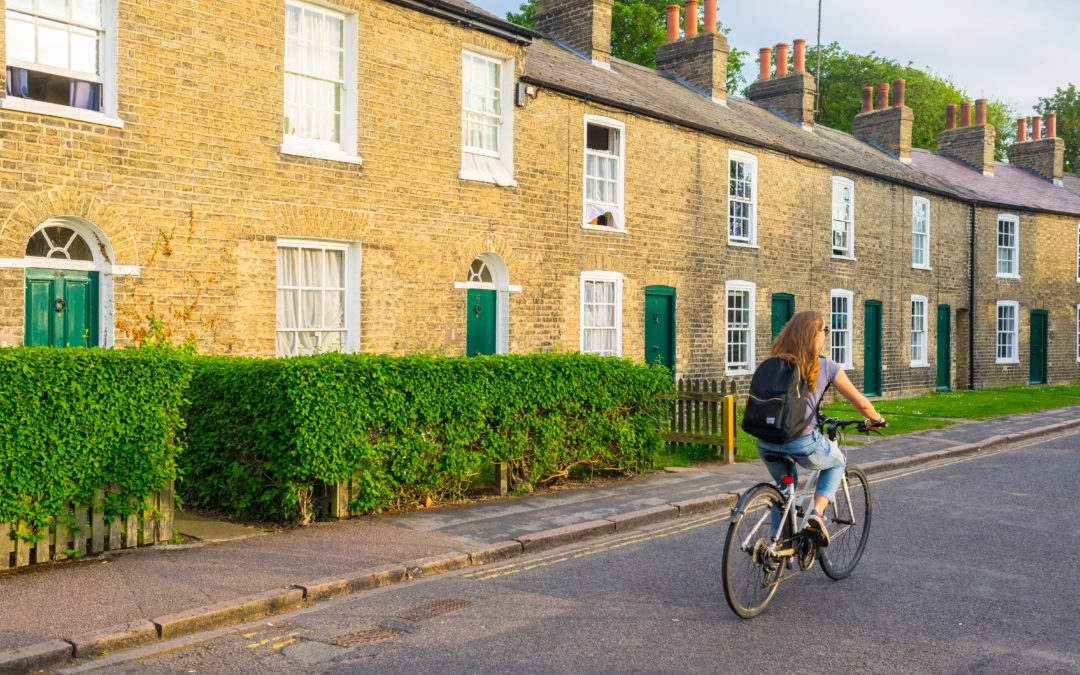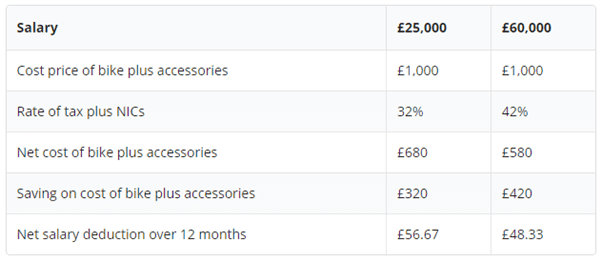Times are hard. We all feel that we are getting less for our hard-earned cash. Fuel costs are at record levels and inflation is expected to hit 11% in the autumn. And on top this we are all braced for October when the energy price cap increases again. Money is tight and everyone is having to tighten their belts to get by.
The internet is full of good ideas from people like Martin Lewis on how to cut costs at home. No doubt we are all trying our best to reduce our energy costs at the moment, which is easy in the summer when we have just had our hottest ever day recorded in the UK. But winter is coming, and we know that having cooler showers, eating salad every day, and keeping lights off until 10pm at night won’t cut it.
So how else can we save money?
How can I save money on my commute?
There is one area that you may not have thought about when considering how to cut costs. Switch to using a bike to get to work instead of your expensive, gas guzzling motor vehicle. Petrol and diesel cost nearly £2.00 a litre in many parts of the UK. It really is worth thinking about whether your journey to work could be made by bike. There are numerous benefits to using cycle power, including boosting your fitness, your health and your bank balance. But there is also the environmental effect which cycling provides. Did you know, for example, that twenty bikes can be parked in the same space as one car? Or that it takes around 5% of the materials and energy used to make a car to build a bike? Using a bike produces zero pollution.
But I don’t own a bike!
This is where the Government has stepped in to make life a little easier for those of us wanting an environmentally friendly and less expensive mode of transport. The Cycle to Work scheme was introduced by the Government in 1999 to “promote healthier journeys to work and reduce environmental pollution” and has now been used by over 1.6 million commuters.
Using the Cycle to Work scheme can save you at least 32% off the cost of a bike and cycling equipment. Basic rate taxpayers will save 32% of the purchase price, and higher rate taxpayers that increases up to 42% (the 40% tax rate currently kicks in at £50,000).
And that’s before you start looking at the ongoing savings in fuel and maintenance vs using a car.
How does it work?
In theory, your employer buys a bike for you to ride to work and you ‘hire’ it back through salary sacrifice. Salary sacrifice is how you save money as you don’t pay income tax and National Insurance contributions on the monthly ‘fees’ that are deducted from your gross salary, not your net salary, each month. At the end of the ‘hire’ period you are usually offered the option to buy the bike from your employer.
Your monthly payments on your bike reduce your gross salary. This means you’ll save the tax and National Insurance contributions you’d pay on that chunk of your pay packet over the term of the Cycle to Work agreement.
Your employer also saves money on employers’ National Insurance – so its a win win!
How much will I save?
Your savings will depend on how much your bike and equipment costs and how much you earn:
There are also calculators that you can use online to help to work out savings and salary deductions.
Is it easy to set up as an employer?
We hear you! There is so much admin and red tape around the last thing you want to do as an employer is to add to it. Although you could set up and run a Cycle to Work scheme yourself, we would recommend getting a scheme provider to run it for you. That takes all the complexity away and means you don’t need to navigate through the legislation. The scheme provider will need authorisation by the Financial Conduct Authority. It is really important to make sure that the scheme is fully compliant.
And in case you missed it above there is a financial incentive for you as an employer as well. The company saves employers’ National Insurance on the monthly ‘fees’ too.
Are there any downsides to this?
Hmmm…. losing weight, getting healthy, saving money and more importantly, saving the planet, they are all good reasons to cycle to work! There are however a few possible negative points to note:
- Reducing your gross salary might impact other benefits such as statutory sick pay and the size of your pension contributions;
- It might also impact on how much you are able to borrow for your mortgage as the payments reduce your gross salary;
- You can’t take on any payments that reduce your salary to below the minimum wage;
- If your bike is stolen, you will still be liable for the payments so make sure you get insurance!
What happens at the end of the Cycle to Work agreement?
In practice everyone knows that the employee is ‘buying’ the bike. Legally that isn’t the case until the salary sacrifice ends and the employer ‘sells’ the bike to the employee.
At the end of the agreement there are a few options, depending on how much you have enjoyed your newfound fitness levels and the freedom of cycling to work each day:
- Enter into another agreement, paying a small deposit to rehire the bike;
- Buy the bike from the scheme;
- Give the bike back.
Where do I go to buy a bike? I need one now!
So you’ve decided that your journey to work is doable on a bike and you want to have a bit of extra cash at the end of the month. Maybe you want to get fit and lose some weight. And the planet isn’t going to save itself without your valuable efforts.
Ask your employer if they have a Cycle to Work scheme – if they don’t send them this blog! If they have check if they have signed up with a specific scheme or find out from your HR department if they have any preference over the bike shop that you purchase from. There isn’t a price limit any more on how much you can spend, but this may be limited by your employer’s and scheme provider’s limits, so don’t rush out just yet without doing your research first! You may even be tempted by an electric bike as the price of these is now within reach.
Most bike shops in the UK offer bikes through a number of different Cycle to Work schemes, as do a few online retailers. Remember that it helps to try before you buy so start off at a bike shop to work out your leg measurement and which frame will be the right size for you. And remember to splash out on a bike helmet too. It pays to be safe!
Is the Cycle to Work scheme for you?
At the end of the day, you don’t have to use your new bike for every journey to work. Don’t be put off by thinking someone will be watching to see how often you use it. Every journey made by bike really will save you money, have an impact on your health and the environment, but don’t feel that you need to use your bike to cycle to work every day. The UK weather being what it is, there will be those wet and windy days when nobody wants to get out of bed let alone don lycra and cycle miles to work in the pouring rain. But what can beat cycling down a quiet country lane in the sunshine and knowing that you have done your little bit today to make the world a better place!




